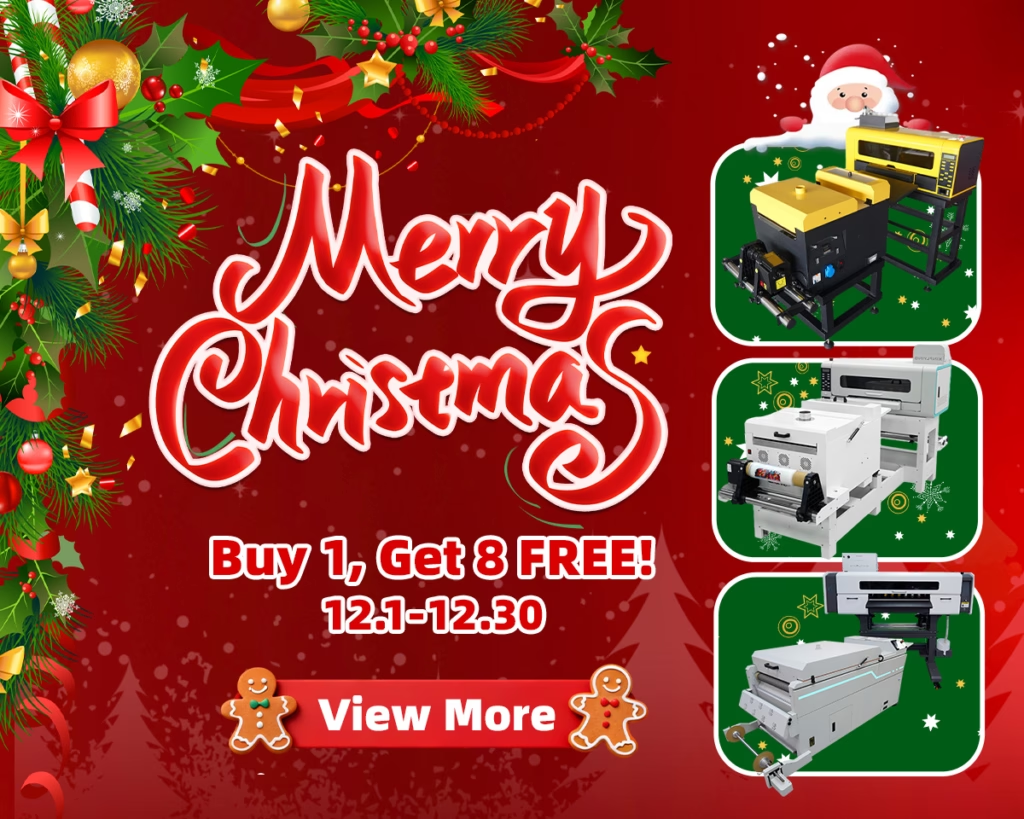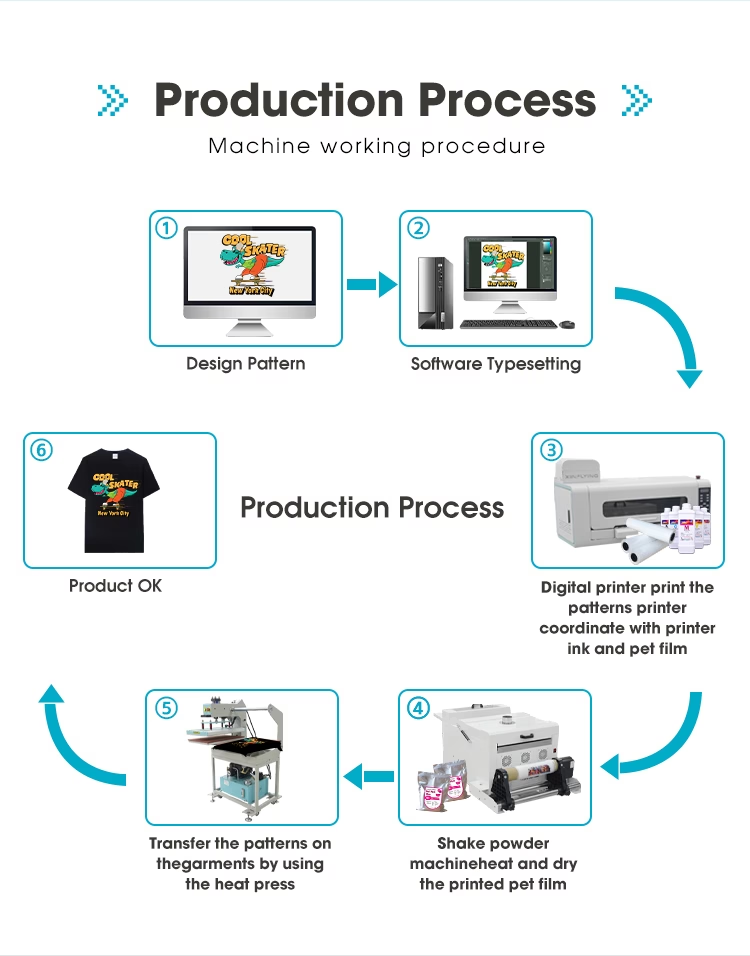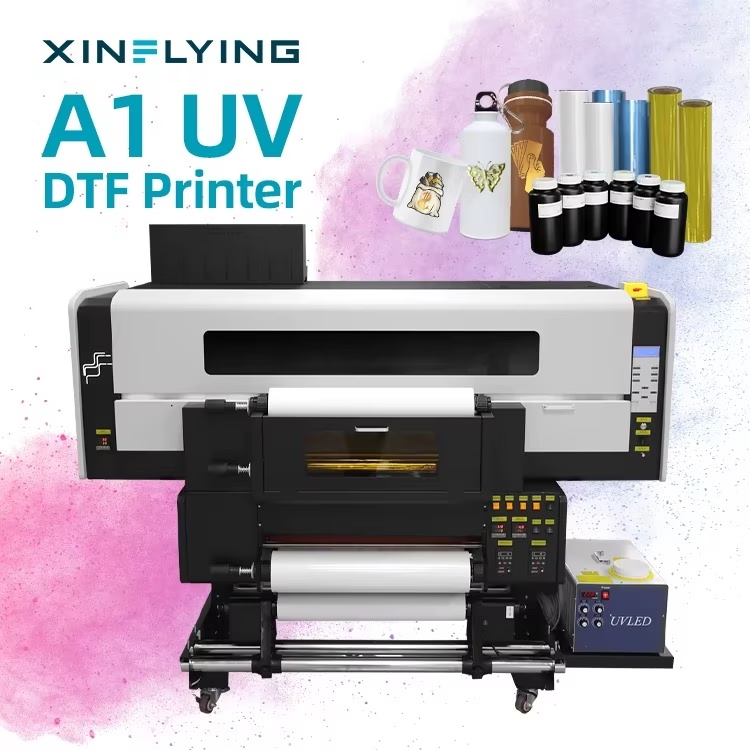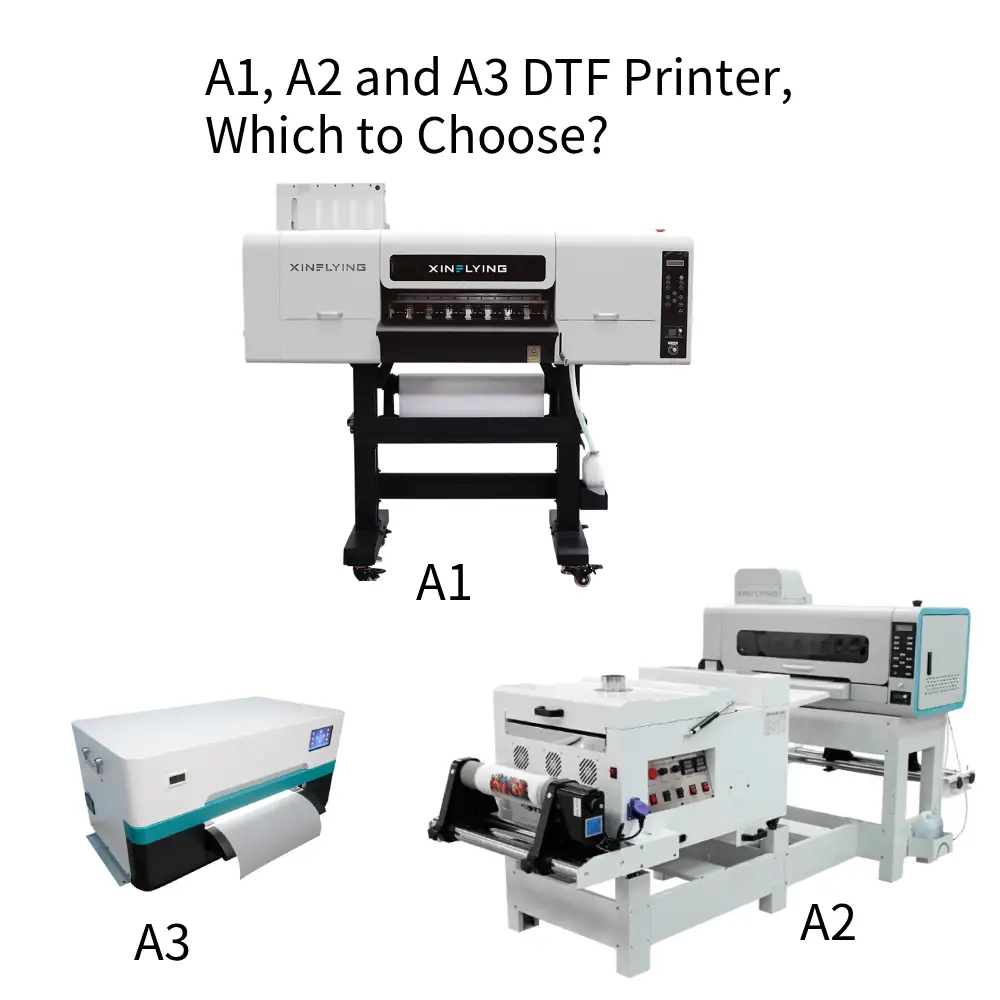ファブリックプリントはさまざまな業界で重要な要素として浮上しています, 鮮やかなだけでなく耐久性も備えた高品質のファブリックプリントに対する需要の高まりに応えます。. このブログ投稿では, 2 つの著名な布地印刷方法を比較することを目的としています。 – 昇華印刷と熱転写印刷. これらのメソッドの複雑さを掘り下げることで、, 私たちは、読者が特定のニーズに合わせて理想的なファブリック プリンター メーカーを選択するのに役立つ貴重な洞察を提供するつもりです。.
昇華印刷とは?

昇華と熱転写に最適なプリンターを見つける前に, 両者の違いを見て、どちらが自分に適しているかを判断しましょう. 昇華印刷は高品質を作成するための一般的な方法です。, 活気のある, さまざまな素材に長持ちするプリントが可能. 昇華プロセスを利用しています, 物質が液相を経ずに固体から気体に変化することです。. この独自の印刷技術は、従来の熱転写方式に比べていくつかの利点をもたらします。, 多くの業界で好まれる選択肢となっています, スポーツアパレルやカスタマイズされた商品を含む.
昇華印刷の仕組み
これにはいくつかの手順が含まれており、鮮明な結果が得られます。, 耐久性のあるプリント. まず最初に, ご希望の画像やデザインを昇華インクを使用して専用の昇華紙に印刷します. 通常のインクジェット印刷とは異なります。, 昇華インクは、加熱すると固体から気体に変化するように特別に配合されています。, 紙に跡を残さずに.
次, 印刷された昇華紙を目的の素材の上に置きます, ポリエステル生地やコーティングされたセラミックなど. 次に、ヒートプレス機を使用してセットアップ全体を高温と高圧にさらします。. この熱と圧力の組み合わせにより、昇華インクは相変化を起こし、気体に変化します。.
インクが気体状態に変化すると、, 素材の表面に浸透します, 繊維またはコーティングとの結合. これにより、永続的な結果が得られます, 色褪せしにくい長持ちするプリント, ひび割れ, または剥離. プロセスは非常に効率的です, ガス粒子は最も小さな隙間にも侵入する可能性があるため、, フルカラーで詳細なプリントを作成する.
昇華印刷のメリット
昇華印刷の大きな利点の 1 つは、 生み出されるプリントの鮮やかさ. なぜなら、 昇華インク 単に表面上にあるのではなく、素材の一部になります, 色はより鮮やかで本物に近いように見えます. さらに, プリントはそのまま残ります 明るさと鮮明さ 複数の洗浄の後でも, スポーツアパレルに最適です, 頻繁な洗濯に耐えることが多い.
さらに, 昇華印刷のオファー 信じられないほどの耐久性. プリントは色あせしにくいです, 過酷な環境や紫外線にさらされる製品に適しています。, 屋外看板やビーチタオルなど. プリント類も、 柔軟性と伸縮性に優れています, 頻繁に動いたり伸びたりする衣類でも完全性を維持できます。.
昇華印刷の応用
シャツに昇華型プリンターを使用する場合を除く, 昇華印刷は幅広い業界に広がる. スポーツアパレル, ジャージを含む, 制服, そしてアクティブウェア, 昇華印刷による鮮やかで耐久性のあるプリントの恩恵を大いに受けられます。. カスタマイズされた商品, マグカップなど, 電話ケース, 繊維製品, 昇華印刷で強化することもできます, 企業が顧客向けにユニークでパーソナライズされた製品を作成できるようにする.
熱転写印刷とは?

熱転写プリントは、布地プリントの一般的な代替方法として登場しました。, 多用途性と利便性を提供する. このプロセスでは、熱と圧力を使用してデザインを生地に転写します。, 鮮やかで耐久性のあるプリントが得られます. このセクションで, 熱転写印刷の複雑さを掘り下げていきます, そのバリエーション, 利点, 制限事項, およびそれを一般的に利用する業界.
熱転写印刷の仕組み
で始まります 転写紙 希望のデザインやパターンが含まれているもの. この紙は高温に耐えられる特殊なインクを使用して印刷されています。. デザインが印刷されたら, 生地の上に下向きに置き、熱と圧力をかけます。, インクが布地に転写されてしまうため、. この方法により、正確で詳細な印刷が可能になります, 複雑なデザインやパターンに適しています.
熱転写印刷にはさまざまな形式があります, それぞれが独自の特性と用途を提供します. 一般的なバリエーションの 1 つは昇華熱伝達です。, これは熱を利用して染料の粒子を気体に変換し、生地の繊維と結合させるものです。. この方法により、鮮やかな色と優れた耐久性のプリントが長持ちします。. 別のバリエーションはプラスチゾル熱伝達です, 生地上で熱硬化するタイプのプラスチックインクを使用します。, 滑らかで不透明なデザインを作成する.
熱転写印刷の利点
その 使いやすさ 必要な設備は最小限で、オンデマンドで実行できます, 小規模生産やパーソナライズされたプリントに適しています。. さらに, 熱転写印刷により、 効率的な色再現, 正確で一貫した結果を保証する. しかし, 熱転写プリントは時間の経過とともに色褪せする可能性があることに注意してください。, 特に頻繁な洗濯や過度の熱にさらされた場合.
熱転写印刷の応用
熱転写印刷は多用途性があるため、さまざまな業界で人気があります。. ファッション業界では, 衣服のカスタマイズによく使用されます, ユニークなデザインやロゴを追加する. 熱転写印刷は室内装飾産業にも応用されています, パーソナライズされたテキスタイルの作成を可能にする, クッションなどの, カーテン, そして寝具. さらに, この方法は、スポーツアパレル業界でチームのユニフォームやイベント商品を製造するために広く使用されています。.
昇華印刷 vs.. 熱伝達の概要
昇華印刷か熱転写かを選択する場合, 素材の種類などの要素を考慮することが重要です, 設計の複雑さ, 希望の仕上がり品質, 各方法には独自の長所と短所があるため、.
| 昇華印刷 | 熱伝達 | |
| プロセス | 熱を利用してインクを紙から布地に気体の形で移動させます。, 洗い流さない注入が生じる. | 熱を利用して紙から生地にデザインを転写します。. |
| 印刷品質 | 時間が経っても色あせたりひび割れたりしない、鮮やかで高精細なプリントを提供します。. | 比較的良好な印刷品質が得られますが、時間の経過とともに色褪せたり亀裂が入ったりする可能性があります。, 画像は生地に重く感じるかもしれません. |
| 耐久性 | 高い, 生地自体に染料を染み込ませているので、. | 耐久性はそれほど高くないかもしれません, 画像がマテリアルに注入されるのではなく、マテリアルの上に置かれるため. |
| 快適 | 肌にとても快適です, プリントは生地の一部なので. | プリントは若干重くなり、快適さが低下する可能性があります. |
| 多用途性 | ポリエステルやその他の合成素材を含むさまざまな素材に使用可能. | 綿へのプリントに最適, シルクまたはナイロン. |
| 色の範囲 | 幅広い色と複雑なデザインを実現できます. | 使用するプロセスや材料によっては、色の範囲がわずかに制限される場合があります. |
| 料金 | 必要な機器と基板による初期費用の増加, しかし、継続的なコストは低くなります. | 初期費用の削減, ただし、転写紙とインクが必要なため、継続的なコストが高くなります. |
| 応用 | ポリエステルやその他の合成繊維への印刷に使用されます。. カラフルで複雑なデザインに最適. | 綿やその他の天然繊維生地へのプリントによく使用されます。. 色を抑えたシンプルなデザインに最適. |
ファブリック プリンターを選択する際に考慮すべき要素
印刷品質
考慮すべき最も重要な要素は、ファブリック プリンターのメーカーが提供する印刷品質です。. を探してください ファブリックプリンターメーカー 高解像度の印刷を提供する, 鮮やかな色, そして鮮明な画像. 印刷サンプルをリクエストして、印刷の視覚的な魅力と鮮明さを評価してください。.
印刷技術
一般的なファブリック プリンター オプションは次の 2 つです。 昇華プリンター そして熱伝達. 各方法の長所と短所を理解し、どちらが特定の要件に適しているかを判断します。. 一部のメーカーは 1 つの技術に特化している場合があります, したがって、それに応じて選択してください.
耐久性
プリントの耐久性を考慮する, 特に生地が頻繁な洗濯や屋外の要素にさらされる場合は. 信頼できるファブリックプリンターメーカーは、複数回の洗濯に耐え、色堅牢度を維持する高品質のインクと素材を使用します。.
多用途性
ファブリックプリンターメーカーが提供する多用途性を評価する. プリンターはさまざまな種類の生地を処理できますか? 幅広いサイズや形状に印刷できますか? 創造性を最大限に発揮し、クライアントの多様な要求に応えるソリューションを提供するメーカーを選択してください。.
使いやすさ
ファブリック プリンターの操作はスムーズで手間のかからないものでなければなりません. ユーザーフレンドリーなソフトウェアと明確な説明書を提供するメーカーを探す. さらに, テクニカル サポートについて問い合わせ、問題が発生した場合にどのように簡単にサポートを受けられるかについて問い合わせる.
スピードと生産能力
ファブリックプリンターの生産速度と生産能力を考慮する. 大量の印刷が必要な場合, メーカーが印刷品質を損なうことなくお客様の要求に応えられるようにします. また, 注文の納期を評価する, ビジネスの効率に影響を与える可能性があるため、.
コストと投資収益率
ファブリック プリンターの手頃な価格を判断し、その長期的な価値を評価する. さまざまなメーカーの価格を比較する, メンテナンスなども考慮しながら, 用品, および運用コスト. ファブリックプリンターが長期的に優れたパフォーマンスと高い収益性を提供する場合、より高い先行投資が正当化される可能性があります。.
結論
このブログ投稿では、昇華印刷と熱転写印刷の主な違いを明らかにしています。, 各手法の長所と限界を理解することの重要性を強調する. 特定のニーズと好みを判断することによって, 読者は理想的なファブリックプリンターメーカーを選択できます. 結局のところ, 目的は、布地プリント技術が提供する鮮やかで耐久性のあるプリントを体験したいと考えている人にガイダンスと支援を提供することです。.







